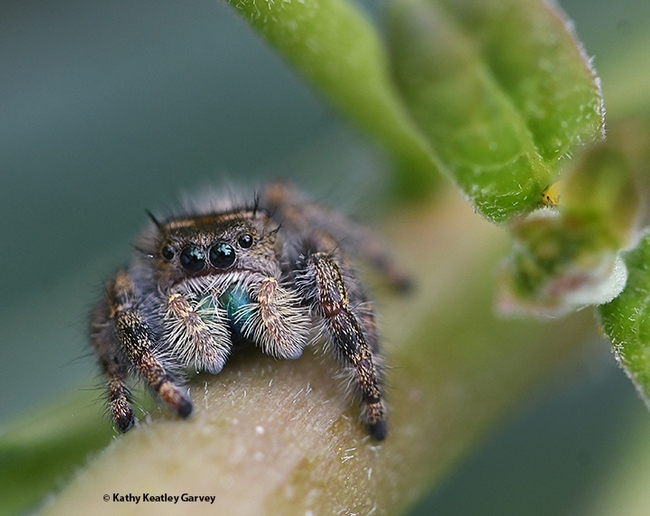
If you engage in social media, you've probably seen a "what-is-this" query about a spider that some unsuspecting person discovered quite unexpectedly in a garden, bedroom, bathroom or garage. Triple exclamation points usually accompany "Yecch!!!" (Expletives usually require quadruple exclamation points.)
For a good general view of spiders, check out the UC Statewide Integrated Pest Management Program's newly revised "Spiders" Pest Note.
"Many people fear or dislike spiders," according to the site, but "for the most part, spiders are beneficial because of their role as predators of insects and other arthropods, and most cannot harm people. Spiders that might injure people—for example, black widows—generally spend most of their time hidden outside homes in woodpiles or in clutter in the garage. The spiders commonly seen out in the open during the day are unlikely to bite people."
Spiders, which are arachnids, differ from insects in that they have eight legs (not six) and have no wings or antennae.
UC IPM offers information on black widow spiders, yellow sac spiders and recluse spiders (which, contrary to popular opinion, are NOT found in California). The website also touches on jumping spiders, hobo spiders, common house spiders, and tarantulas. A table, illustrated with photos, lists the common spider families in North America, including:
- Agelenidae, funnel weavers or grass spiders
- Araneidae, orb weavers or garden spiders
- Clubionidae (including Corinnidae), sac spiders or twoclawed hunting spiders
- Linyphiidae (=Microphantidae), dwarf spiders
- Lycosidae, wolf spiders
- Oxyopidae, lynx spiders
- Salticidae, jumping spiders
- Theridiidae, cobweb, cobweb weaver, or combfooted spiders
- Thomisidae, crab spiders or flower spiders
What about spider bites? "Unlike mosquitoes, spiders do not seek people in order to bite them," UC IPM says, tongue in cheek. "Generally, a spider doesn't try to bite a person unless it has been squeezed, lain on, or similarly provoked to defend itself. Moreover, the jaws of most spiders are so small that the fangs cannot penetrate the skin of an adult person. Sometimes when a spider is disturbed in its web, it may bite instinctively because it mistakenly senses that an insect has been caught."
If you've got a hankering to see a live tarantula (who doesn't?), you can do so when the Bohart Museum of Entomology at UC Davis opens its doors again to the public. The Bohart Museum, home of nearly eight million insect specimens, a gift shop (now online), and a live "petting zoo" (think Madagascar hissing cockroaches, walking sticks and taranatulas) is located in Room 1124 of the Academic Surge Building on Crocker Lane. UC Davis spider expert Professor Jason Bond and his lab usually present a program there at least once a year or engage with folks at the open houses. Bond serves as the Evert and Marion Schlinger Endowed Chair in Insect Systematics, UC Davis Department of Entomology and Nematology. (See his lab website)
As an aside, Professor Bond "bonds" with spiders. Yes, he does. And he's never met a spider he didn't like.
Attached Images:
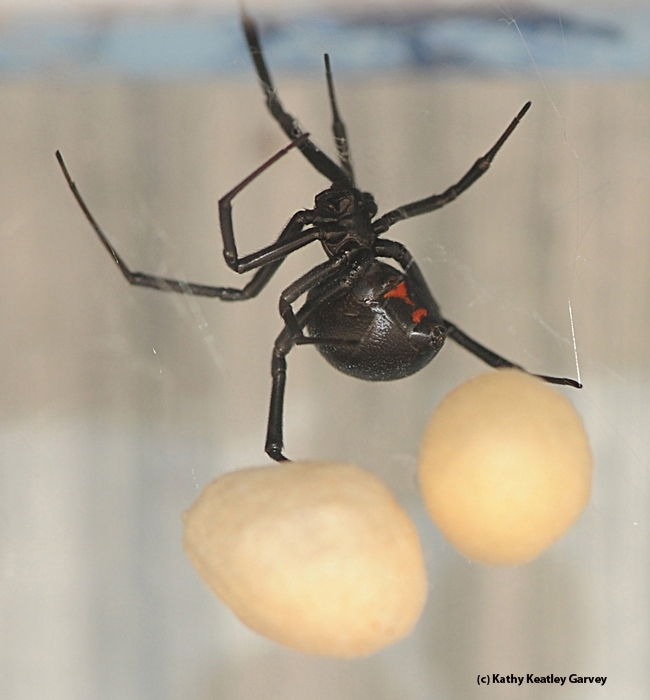
A mama widow spider juggles her egg sacs. (Photo by Kathy Keatley Garvey)
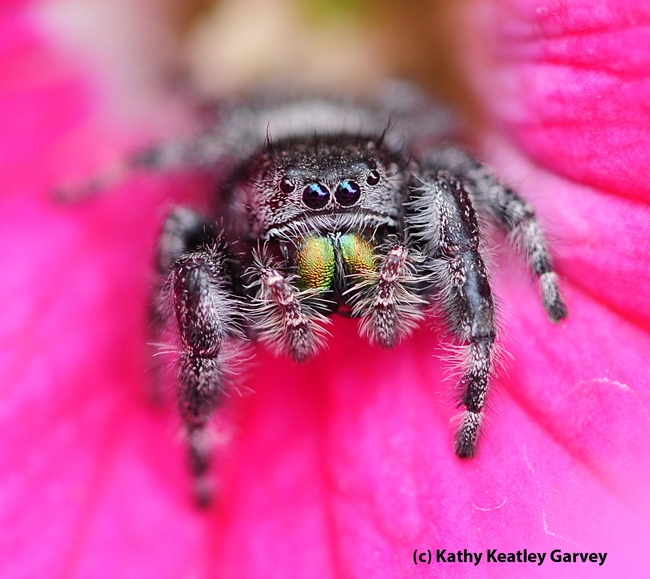
A jumping spider eyes the photographer. (Photo by Kathy Keatley Garvey)
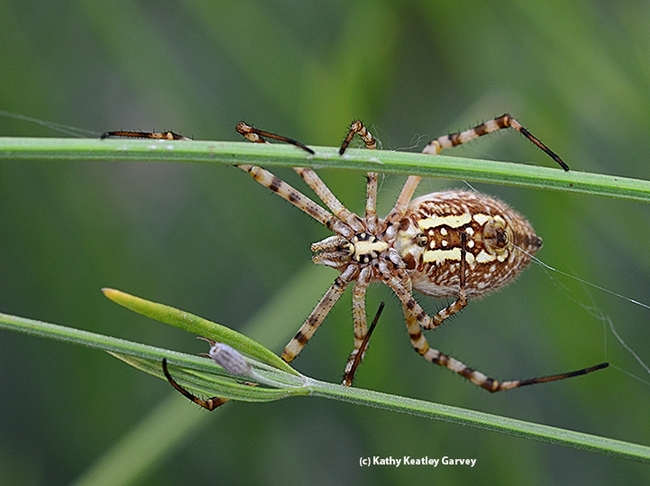
A banded garden spider moving right along. (Photo by Kathy Keatley Garvey)
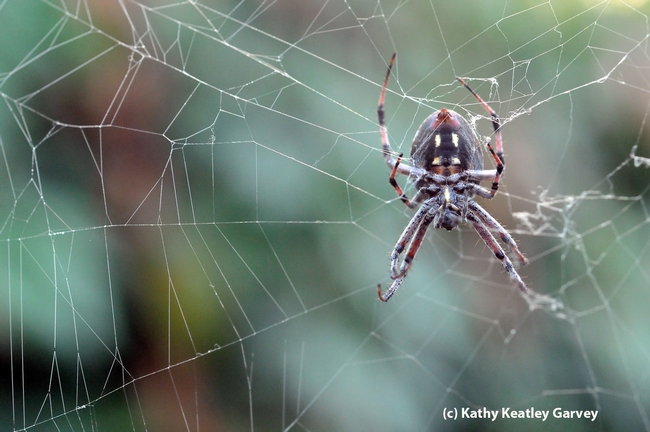
A garden spider lying in wait for prey in its web. (Photo by Kathy Keatley Garvey)
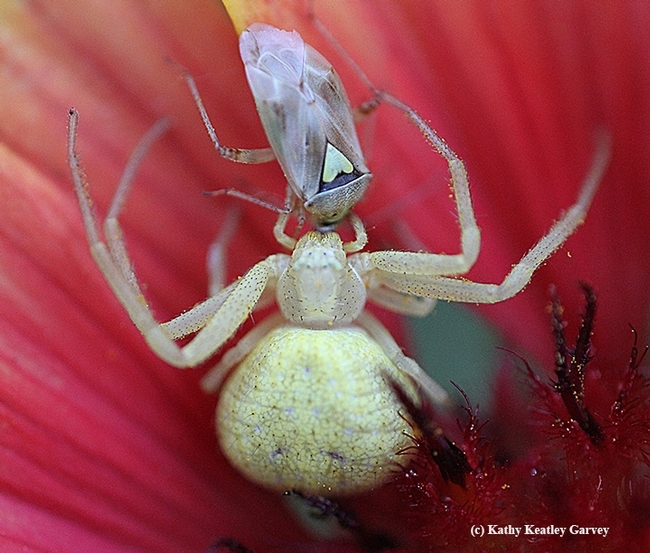
Catch of the day! A crab spider nails a lygus bug. (Photo by Kathy Keatley Garvey)